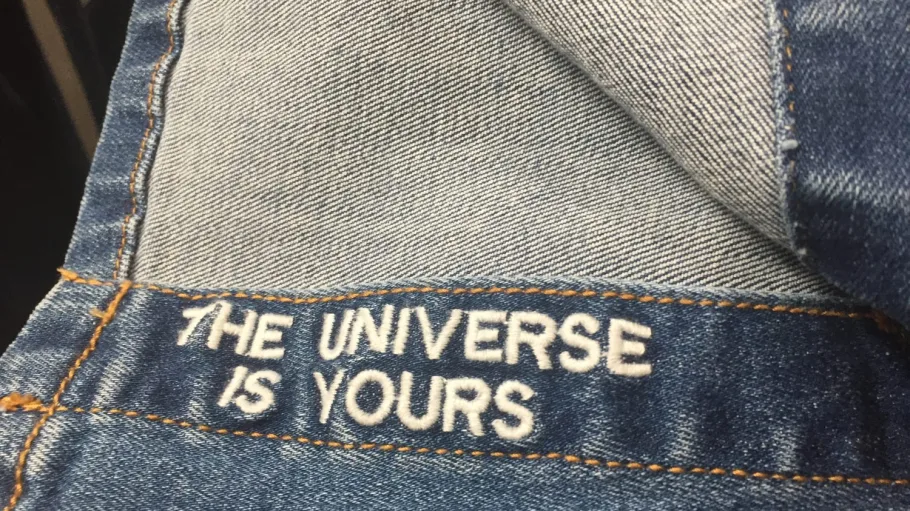Skinny Blue Jeans Are Headed for Extinction
Wide-legged denim is making a move to become more popular among blue jeans wearers.

Could skinny jeans be going the way of the dodo bird or the Tasmanian tiger?
Skinny jeans have been in everyone’s closet for the past decade or so, but soon they might end up in the recycling bin.
These leg-hugging versions of denim pants gained notice with the rap and hip-hop crowd and by 2010 quickly took over the fashion runways. Skinny jeans were everywhere in different colors, washes, ankle treatments and later distressed finishes.
But word on the denim sewing floor is that skinny jeans are fading fast and flares are in. Big time. Right behind those flares are wide-legged denim pants popular in Europe and inching their way into U.S. stores.
“Skinny jeans are not in right now,” said Cecilyne Mora, a sales representative for Ceros Jeans, a relatively new Los Angeles denim brand that is creating all kinds of looks. “Flares and wide-cut jeans are in for the summer.”
Mora was showing Ceros Jeans’ latest collection at FashionGo, a new trade show held May 3 to 5 in Palm Springs, Calif. It was organized by FashionGo, a business-to-business website that sells clothing, accessories and other items to retailers.
Ceros Jeans designers believe consumers want something a little special, so inside the waistband they are adding embroidered sayings, such as “The Universe Is Yours” and stitched images of Monoceros, the unicorn constellation for which the blue jeans label is named.
Other denim vendors on the floor agreed that after so many years of being a tried-and-true bestseller, skinny jeans are disappearing from the denim scene. “We moved away from the skinny and went to boot cuts, flares and flare capris,” said Dianna Guerrero, the trade show manager and account executive for Judy Blue Jeans, a Los Angeles label launched in 1999.
Judy Blue Jeans’ core customer is someone in her 20s to 40s who wants to wear jeans to work and be trendy. “Wide-legged jeans have been super popular,” Guerrero said.
Michael Godigian, co-owner of YMI Jeanswear, has been an astute follower of jeans trends ever since he and his partners started their Los Angeles company in 2000. He is seeing flares everywhere. “Flares have been amazing. They are tight in the waist to the knee and then they have a leg opening that goes from 21 inches to as wide as 30 inches, which is brand new,” he said.
But Godigian is also seeing a rise in wide-legged jeans. He said a friend recently visited Europe and saw wide-legged jeans everywhere. Average leg widths varied from 28 to 30 inches. So last January, Godigian shipped his first batch of wide-legged jeans to keep up with the trends.
Mike Kim sees geography and age determining who buys which blue jeans silhouette. As the owner of Mica Denim, a recently launched Los Angeles label, he has noticed that flares and boot cuts are very popular in the Midwest. “The younger kids are into wide legs,” he said. “Skinny jeans were the thing, but they are going away.”
For Charlie Chung, operations manager for Just Panmaco Inc., the Los Angeles parent company of Just USA Jeans, Just Black Denim and JBD, the jeans market is all about wash. And, yes, skinny jeans are fading from the fashion front.
“Everybody did skinny, skinny jeans a couple of years ago. They are still selling,” he said. “But it is more straight legs, mom jeans and girlfriend/boyfriend jeans. Flares are getting there, and cropped flares are really popular because you can wear them with any kind of shoe.”
Many denim makers are seeing store buyers prefer a medium wash to their jeans and less distressing to save money. With cotton prices up 40 percent, indigo dye prices jumping more than 100 percent and polyester prices climbing 45 percent, blue jeans manufacturers are trimming costs to accommodate customers struggling with inflation.
“Wash wise, buyers are going for simple washes,” Chung said. “Before, there was a lot of destruction in jeans. Now top manufacturers are getting rid of this destruction to minimize the cost. I think customers are buying it.”
Mora of Ceros Jeans said her company is doing a lot of medium washes and acid wash is coming back. People are also getting into a two-button top at the waist that gives a more finished look.
She is also selling a two-tone pant that has been popular. One pant leg is a medium blue and the other is a washed black tone. Two-tone pant cuffs are trending as well.
Stretch is another element experiencing change. Before, a blue jean typically had about 1 percent of spandex. Now manufacturers are tossing in another 1 percent to make it more comfortable. “We have noticed that customers want more spandex because they are so used to being comfortable,” Mora said. “We now have 2 percent spandex. That extra 1 percent makes a big difference.”
Godigian of YMI Jeanswear is upping that. He has a slip-on jean, like a legging, that comes in 30 colors and has 4 percent spandex. “It’s very big on TikTok,” he observed
While many of the denim exhibitors at the FashionGo trade show weren’t incorporating sustainable fabrics yet into their clothing, they were trying to make it work with a cost-wise product. “Unfortunately, it means higher prices,” Chung said.
One pricey factor, however, is selling well. Just Panmaco manufactures about 20 percent of its jeans in Los Angeles, raising the wholesale price to $34 to $40, compared to $20 to $25 for imported styles.
“Made in USA makes our customers happy,” the operations manager said. “They are willing to pay more for that.”
